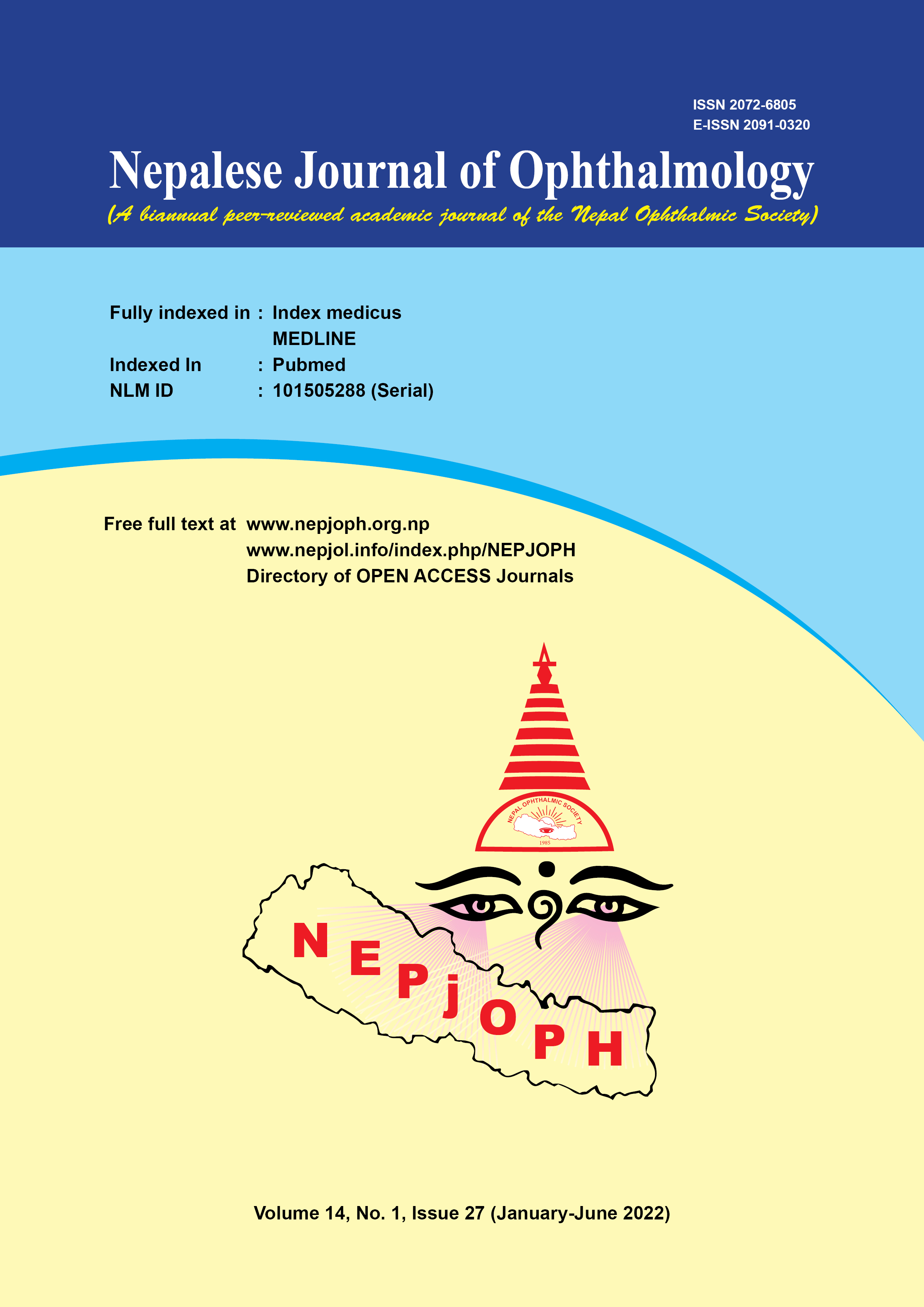Screening of Accompanying First Degree Relatives of Patients with Primary Open Angle Glaucoma
DOI:
https://doi.org/10.3126/nepjoph.v14i1.39240Keywords:
Awareness, Glaucoma, POAG, RelativesAbstract
Introduction: Glaucoma is one of the common causes of blindness worldwide, and the leading cause of irreversible blindness .The overall prevalence of glaucoma in Nepal is 1.9%. Though poorly understood, primary open angle glaucoma (POAG) is believed to have a genetic or familial component that may occur through polygenic or multifactorial transmission. First-degree relatives of POAG patients have 4–16% risk of developing POAG. Given the circumstances and the prevalence of POAG in first degree relatives of POAG patients, screening the first degree relative/s accompanying the patient to the hospital can be a cost effective and viable tool for glaucoma screening that will not add any extra cost of travel and accommodation.
Materials and methods: The authors performed a hospital-based cross-sectional study at a tertiary eye hospital in Nepal. All first-degree family members of POAG patients who accompanied them to the glaucoma clinic underwent a full ophthalmic examination.The optic disc was evaluated and intraocular pressure (IOP) was measured. POAG and glaucoma suspect were defined as per ISGEO classification.
Results: Sixty one first degree relatives of 54 glaucoma patients were examined. The mean age was 30.67 years (±12.71). Fifty five(90.2%) of 61 of accompanying first degree relatives were off springs, 6 (9.8%) were siblings. Five out of 61 (8.2%) were diagnosed as glaucoma and started on anti-glaucoma medication. Fourteen participants (23%) were glaucoma suspects. Forty two (68.9%) of the participants had no sign of glaucoma.
Conclusion: Ocular examination of the first-degree relatives accompanying POAG patients helped to identify a remarkable number of individuals with glaucoma and thus might be used as an effective and viable tool for screening glaucoma in a hospital setting. Awareness regarding glaucoma is very low even among the first degree relatives of glaucoma patients.
Downloads
Downloads
Published
How to Cite
Issue
Section
License
Copyright (c) 2022 Nepalese Journal of Ophthalmology

This work is licensed under a Creative Commons Attribution-NonCommercial-NoDerivatives 4.0 International License.
This license enables reusers to copy and distribute the material in any medium or format in unadapted form only, for noncommercial purposes only, and only so long as attribution is given to the creator.




